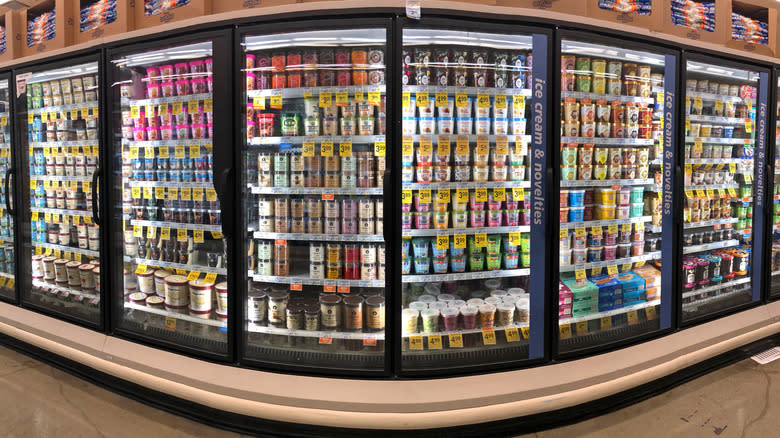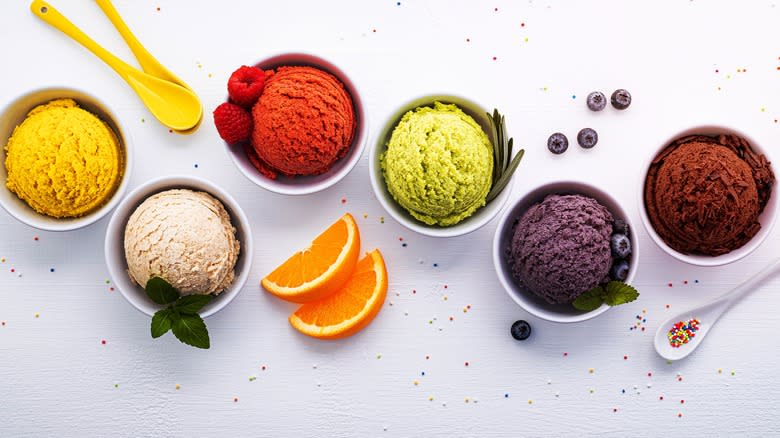Why Some Of Your Favorite Grocery Store Ice Cream Brands Can't Be Labeled 'Ice Cream'

For most people, seeing the words "frozen dairy dessert" on a tub of Breyers is cause for suspicion. What's wrong with it? Is it a legal thing? Why can't they just call it ice cream?
While it's true that brands use labels like "frozen dairy dessert" to work around the legal definition of ice cream, that doesn't necessarily mean that "frozen dairy desserts" are bad. At its most basic, ice cream is made up of cream, milk, sugar, and sometimes eggs. All ice cream has a certain amount of air too. High quality ice cream generally has less air, while budget brands tend to whip as much air into the formula as possible. In the ice cream industry, this is referred to as "overrun." High overrun means more air, while low overrun means less.
The USDA states that, legally, Ice cream can't contain less than 10% milkfat or 20% milk solids. It caps the legal amount of overrun at 99% too. Products made with less dairy fat are cheaper to produce, and what company wouldn't jump at the chance to sell customers a carton that's mostly air?
But there are many reasons why a product wouldn't meet the legal definition of ice cream — and even popular flavors from celebrated brands don't pass the test. While high overrun and low milkfat are ways that brands cut corners, they aren't necessarily mutually exclusive with quality. Ultimately, the quality of the ice cream depends on production and ingredients, not a legal definition.
Read more: 23 Best Ice Cream Brands Ranked
Some Of The Best Ice Cream Isn't Legally Ice Cream

When "frozen dairy desert" started popping up on Breyers packaging, some consumers reacted with consternation. Fans questioned what "frozen dairy desert" even meant and noted the addition of ingredients like guar gum and diglycerides, markers of ultra-processed food. But the brand maintained that they were only responding to customer demand for a smoother texture, a marker of high overrun. Gums and emulsifiers help keep the ice cream stable since more air means a weaker structure.
"Frozen dairy dessert" isn't the only way that brands sneak around the "ice cream" label. You might find not-technically-ice-cream ice creams labeled "gelato," a word that doesn't have a legal definition in the United States. That's not just a marketing ploy, either — traditional Italian gelato doesn't contain enough fat to legally be considered "ice cream" by the US government. Ever notice that a stand selling "soft serve" doesn't include the word "ice cream" on its signage? That's because, like gelato, soft serve tends to contain less fat and, therefor, tastes different than standard scoop ice cream. While soft serve isn't traditionally considered gourmet, it has its share of fans — including professional chefs who've started crafting their own versions with high-quality ingredients.
Next time you notice "frozen dairy desert" on a tub from your favorite brand, don't recoil in horror. Give it a try — you might actually like it.
Read the original article on Tasting Table

